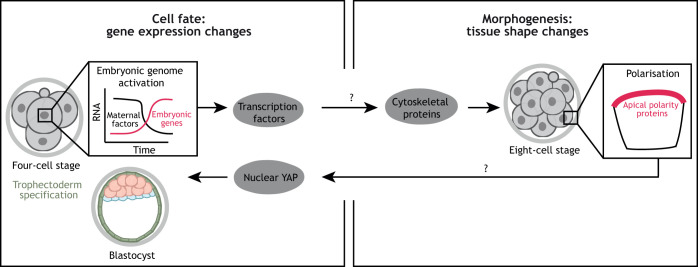Fig. 2.
Proposed cell fate-tissue shape crosstalk during human pre-implantation development. The onset of apicobasal polarisation at the eight-cell stage may be controlled by the expression of embryonic genes, potentially encoding transcription factors. As recently shown in mouse embryos, embryonic genome activation induces the expression of regulators of the actin cytoskeleton. This leads to a remodelling of the actin network that is necessary for the clustering of apical polarity proteins, and culminates in the formation of the mature apical domain. In turn, the acquisition of apicobasal polarisation may lead to nuclear YAP localisation, as seen in the mouse, and expression of trophectoderm-specific transcription factors. This model remains to be functionally validated in human embryos. Question marks denote molecular connections that have not been validated in human embryos.

